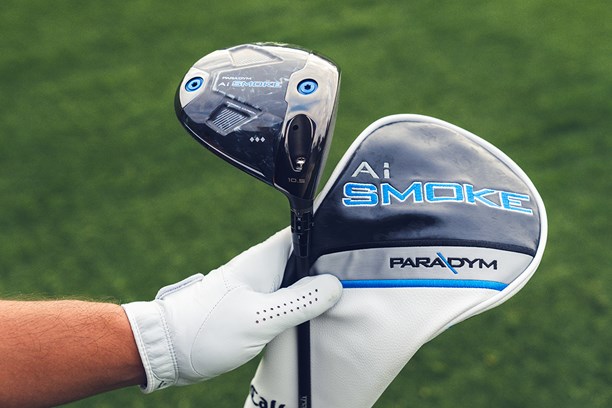Callaway Paradym Ai-Smoke Triple Diamond Driver Review
Last updated:
-
At a glance
- TG Rating
- Owner Rating
-
Pros
- The new Smart Face concept is a really clever idea to tailor drivers more to your game.
- With four models to choose between, there's a driver solution in the Ai-Smoke family for everyone.
- Expect a good-looking, fast, and lovely-sounding driver.
-
Cons
- Remember this is the least forgiving driver in the Ai-Smoke family.
What we say...
The Callaway Paradym Ai-Smoke Triple Diamond driver is said to be sweeter no matter where shots hit the face, my review finds out if it delivers.
Whether we like it or not, Artificial Intelligence is playing an increasing role in our everyday lives. AI powers virtual assistants, medical diagnosis, driverless cars, and annoying online chatbots, but when it comes to golf Callaway is absolutely determined to boss designing clubs using AI. So much so the design behind the Callaway Paradym Ai-Smoke Triple Diamond driver wouldn’t be possible without it.
The company has put in years of work building knowledge to harness the power of AI to create some of the best golf drivers available, which they say will help golfers hit drivers further and straighter than ever before. Here’s how…
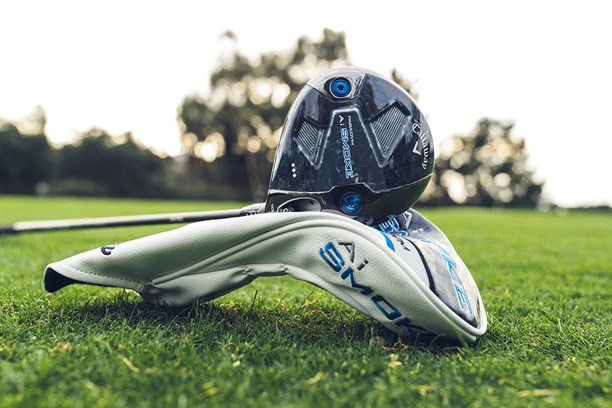
The background
Callaway has been doing AI for 15 years
With other golf brands batting around how they use AI to design golf clubs, Callaway is quick to point out they’ve got more pedigree than the competition. The company bought its first super-computer back in 2009. Yet it took 10 years before the Epic Flash launched in 2019. The first commercially manufactured golf product designed by AI.
This spells out how it’s impossible to just go to a local tech shop, buy a super-computer off the rack, start it up, and set it free designing drivers. With 120 people in Callaway’s R&D team and a dedicated Artificial Intelligence team assembled from outside golf, nobody in the game is more focused on writing lines of custom code to harness AI into designing better-performing golf products.
Sweeter from every spot
The previous Paradym driver was a massive success. It won countless events in the hands of Jon Rahm, Sam Burns, Xander Schauffele, and Rose Zhang. Club golfers bought it in their droves too. The model represented a huge shift in how the company designs drivers, incorporating a full 360° carbon fiber chassis, hence the ‘Paradym’ name.
However, Callaway’s super-computer-driven AI has got so good, that the company can legally claim the Ai-Smoke drivers are 7 yards longer than their predecessors. And that data’s measured from 21 different spots across the face, not nine like the industry standard. Staggering gains within a single generation.
How have they done it? Well, it all comes down to the most sophisticated driver face ever made, the super new Ai-Smart Face.
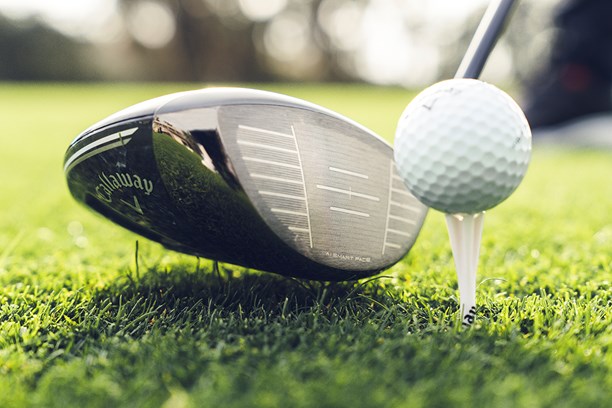
Everything you need to know about the Callaway Ai-Smart Face
Swing Code has been developed from real player data
Typically drivers are designed using R&D robots, in a static environment. New models are hit in different locations across the face and engineers study the results. Using a robot means there’s no opportunity to factor in how various categories of golfers deliver the club differently at impact.
What sets the Paradym Ai-Smoke Triple Diamond driver apart then, is how it’s been optimized using real golfer swings.
Callaway says they’ve mapped 250,000 tour pro and consumer swings across the world because real golfers don’t swing like robots. The project has given the company over a million data points to feed into the super-computer. A move that better optimizes each of the four Paradym Ai-Smoke drivers for their intended audience.
Traditionally drivers are designed using five to eight different face iterations. Thanks to artificial intelligence the new Ai-Smoke models benefit from 50,000 electronic prototypes. Plus, thanks to the hours of real-world research each individual design is more tailored to the typical speed, path, and impact location of its intended audience.
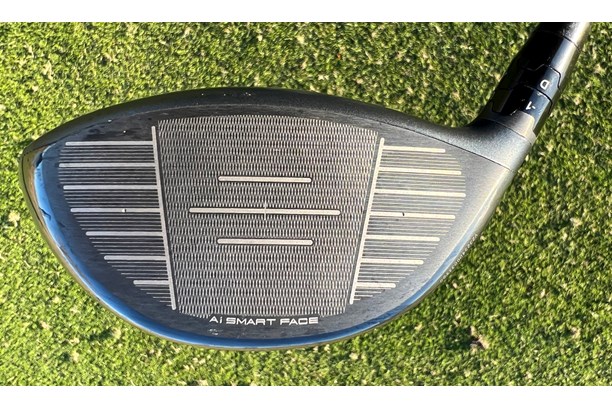
Micro trampolines
We’ve all heard how modern variable thickness driver faces act like trampolines and slingshot shots off faster and further than flat faces used to decades ago. It’s mind-blowing though that Callaway says the new Ai-Smart Face contains smaller areas that act like micro-trampolines. The idea is each counteracts a miss of the typical golfer who’ll use each of the four Ai-Smoke driver models, which is really clever thinking.
Just to be clear this is not a bulge and roll story like TaylorMade’s TwistFace. It’s about changing the launch and spin of shots through the design and contouring of the face.
The idea has a big impact on down-range dispersion and means heel shots generate less cut spin, so the ball goes less far right (for a right-hander) and benefit from additional yardage. Where low spin shots hit high on the toe are less likely to fall out of the sky and draw less. Hence the ‘sweeter from every spot’ tagline.
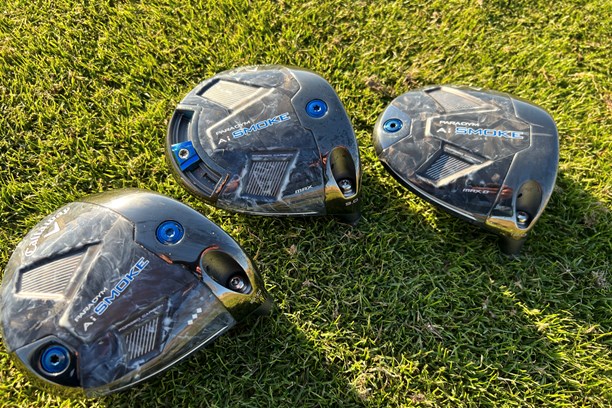
What’s the benefit of Swing Code?
Swing Code is a whole new way to design driver faces. Callaway is the first to take this approach of designing individual faces for different types of golfers. But how can it help you play better golf?
Well, Callaway says it’s all about the number of times they can run their designs through the super-computer, as each time there’s an improvement in speed or dispersion from somewhere on the face. Until a point when gains become virtually non-existent for that particular model.
Having the computer model 5,000 different faces, dispersion stood at 85.29 sq yards. At 10,000, that dropped to 68.33 sq yds, while at 50,000 iterations the number incredibly narrowed to 33.89 sq yds. This means the power of AI has cut dispersion by almost one-third.
Spelling out plain and simple why computer modeling completely outstrips humans. As it would have taken humans 10 years to make thousands of driver face iterations, and even then nobody would have dreamt up what the super-computer has.
Video: How does the Callaway Paradym AI Smoke Triple Diamond compare to other leading 2024 drivers?
Which Ai-Smoke driver is best for you?
Callaway hasn’t just studied the impact point of where different abilities of golfers impact shots on the face, they’ve considered attack angle, club path, and speed too. Here’s how to break down where your driver game fits.
Callaway Paradym Ai-Smoke Max D and Max Fast driver
These golfers typically, but not always, swing driver between 75 and 90 mph, which is considered slow to average. Shots are likely to be sprayed from low heel to high toe and the attack angle will be down onto the back of the ball, with an out-to-in swing path.
Those needing the most help with fighting a slice should gravitate toward the Max D, whereas those needing additional speed should explore the Max Fast.
Callaway Paradym Ai-Smoke Max driver
The Max is Callaway’s core driver model, aimed at the majority of golfers. Those best suited to this set-up are likely to have an impact location a little higher on the face than Max D and Max Fast players. Shots are likely to be grouped a little more tightly on the face too.
Attack angles are likely to be a fraction down to a little up and the target player will generate mid-speed (90 – 100 mph). Possibly they’ll also have a fade rather than a slice as a stock shot.
Callaway Paradym Ai-Smoke Triple Diamond driver
Triple Diamond golfers are likely to have a higher swing speed of 105 – 120+ mph and shots are much more likely to be grouped tightly around the center of the face. The attack angle should be up onto the back of the ball and players will generally have a much more neutral path.
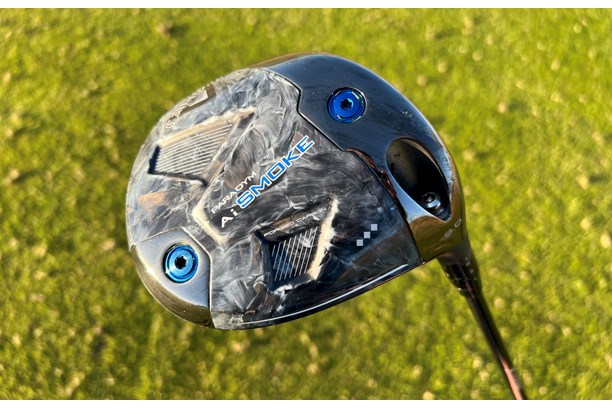
Everything you need to know about the Callaway Paradym Ai-Smoke Triple Diamond driver
RRP: $599.99 / £569
Lofts: 8° / 9° / 10.5°
Very much the model for high-speed players and Callaway’s band of elite tour athletes. Expect this model to lower spin, yet remain stable and reasonably forgiving compared to the best low-spin driver competition.
Even though the preceding Paradym Triple Diamond driver won more tour events around the world than any other, this year’s Ai-Smoke will deliver tighter down-range dispersion. Front and back sole weighting allows golfers to dial in launch and spin, which usually is more important to decent players than correcting shot shape.
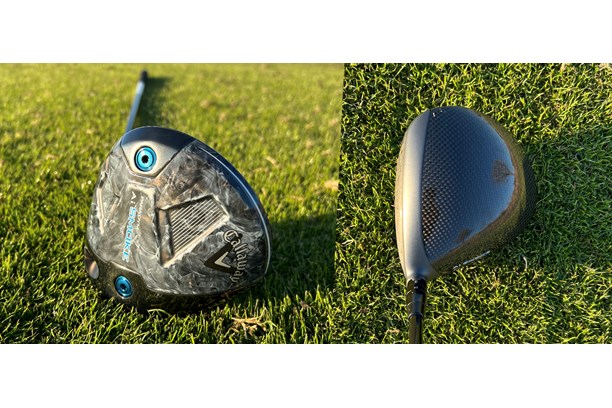
Typical player traits
Swing Speed: Higher Speed (100 – 120 MPH)
Impact location: Mostly centered
Attack angle: Upward
Club path: Neutral
Verdict: Callaway Paradym Ai Smoke Triple Diamond driver
The original Paradym Triple Diamond in 2023 was an absolute beast of a driver, it got out the gates early and racked up several tour wins, and we like other media outlets applauded its impressive ball speed and distance credentials. To see how its replacement performs we put it up against the the leading 2024 low-spin driver models in the hands of TG Test Pro Neil Wain at Keele Golf Centre. Our test data below shows how all the models compare.
Manage expectations
I said it about the Paradym TD last year and I’ll say it again in 2024, to play this driver successfully you have to fit Callaway’s target audience of being a high-speed player, but also a consistent hitter. If you do, this is a seriously fast, powerful, and strong low-spin driver option, so strong it ranks among our top two performing low-spin drivers of 2024 (alongside the TaylorMade Qi10 LS). However, if you don’t quite fit the category, or your game sits on its fringes you’re putting way too much forgiveness on the line searching for ball speed.
Remember over and above last year’s model Callaway’s new Ai Smart Face has been optimized using real golfer data to better perform for golfers who group shots more tightly on the driver’s face. That means golfers who hit this model more consistently closer to center face see faster speeds, while those who don’t get even more harshly punished than in 2023.
Looking at our test pro’s left-to-right dispersion no matter whether we positioned the heavier 14g weight in the back port (more forgiving) or the front position (more ball speed and less spin) the numbers posted were all above our test averages (by 45%, 1.9%, and 36.8%). Yet thanks to protecting carry distance better than some of the competition we did see an overall shot area of 593 SQ YDS (across all three settings tested) which is just inside the test average.
Performance
If though you do fit the bill and your game is based around consistent hitting at high speeds our test data highlights the TD as a brilliant performing low spin driver in 2024. At 276 yards carry distance, that’s just a single yard back from the very longest, it was our test pro’s 2nd longest low-spin driver in 2024. Yet unlike the lower launching, flying, and spinning but very slightly longer Titleist TSR4 he felt he could play this set-up on the golf course.
Switching the 14g weight from back port to front we reduced backspin by 203 RPM but also lowered launch by 1deg, shot height by 6 yards, and descent angle by 4.7deg, which for Neil at least would make the model virtually unplayable unless he only played links golf and wanted to flight shots significantly lower and let them run out.
And finally…
If you’re lucky enough that your game boasts over 105mph of driver speed and you hit driver more consistently than Jon Rahm you’ll also want to know the TD has a pretty unforgiving look at address. But to play a driver at this level you have to appreciate this is the style of set-up the best players in the world want.
Personally, for club golfers, I’d prefer to see an alignment aid on the top edge, and there’s no escaping how the carbon fiber weave on the crown is loud and in your face. But hands up I cannot hide how fast and powerful the model is so long as your game fits its set-up to a tee.
Hence why it’s one of my two top-performing low-spin driver recommendations (alongside the TaylorMade Qi10 LS) for 2024.
| Driver | Ball Speed | Launch Angle | Backspin | Height | Descent Angle | Carry Distance | Shot Area |
| Titleist TSR4 (10° – Tensei Blue) | 162.4 MPH | 10.8° | 1921 RPM | 28 YDS | 32.8° | 277 YDS (1) | 589 SQ YDS |
| Callaway Paradym Ai Smoke TD (Denali S – Back Weight) | 161.9 MPH | 11.2° | 2099 RPM | 31 YDS | 36.2° | 276 YDS (2) | 424.5 SQ YDS |
| TaylorMade Qi10 LS (Tensei Blue S) | 163.6 MPH | 10.7° | 2338 RPM | 32 YDS | 37.8° | 275 YDS (T3) | 1148.4 SQ YDS |
| Callaway Paradym Ai Smoke TD (Denali S – Front Weight) | 161.7 MPH | 10.2° | 1896 RPM | 25 YDS | 31.5° | 275 YDS (T3) | 553.8 SQ YDS |
| TaylorMade Qi10 LS (Diamana X) | 160.4 MPH | 12.5° | 2260 RPM | 36 YDS | 39.9° | 274 YDS | 179.2 SQ YDS(2) |
| Cobra Darkspeed LS (Lin-Q Blue) | 159.9 MPH | 11.8° | 2007 RPM | 31 YDS | 35.7° | 273 YDS | 1089 SQ YDS |
| PXG 0311 GEN6 (Aldila NV Green) | 161.1 MPH | 10.5° | 2240 RPM | 30 YDS | 36.9° | 271 YDS | 147.6 SQ YDS (1) |
| Titleist TSR3 (10° – Tensei Blue) | 162 MPH | 10.5° | 2435 RPM | 32 YDS | 38.2° | 271 YDS | 566.8 SQ YDS |
| Ping G430 LST | 161.4 MPH | 9.7° | 2301 RPM | 28 YDS | 35.1° | 270 YDS | 246.4 SQ YDS (3) |
| Callaway Paradym Ai Smoke TD (Ventus Blue – Back Weight) | 161.7 MPH | 9.9° | 2006 RPM | 26 YDS | 32° | 270 YDS | 800.8 SQ YDS |
| Srixon ZX7 MK II | 159.8 MPH | 11.4° | 2313 RPM | 32 YDS | 38.2° | 269 YDS | 1036.5 SQ YDS |
| Wilson DynaPWR Carbon | 158.5 MPH | 11.2° | 1828 RPM | 27 YDS | 32.9° | 269 YDS | 509.6 SQ YDS |
| Mizuno ST-G (9.5° – Back Weights) | 162 MPH | 9.1° | 2109 RPM | 24 YDS | 31.3° | 268 YDS | 442 SQ YDS |
| AVERAGE | 161.3 MPH | 10.7° | 2135 RPM | 29.4 YDS | 35.3° | 272 YDS | 595 SQ YDS |
*All lofts at 10.5° unless otherwise stated.
Still not sure which Paradym Ai-Smoke driver is best for you? Check out our full breakdown of what each model offers.
BECOME A TODAY’S GOLFER MEMBER: Unlimited access to premium content and exclusive rewards!
About the author

Simon Daddow – Today’s Golfer Equipment Editor
Simon Daddow is the Equipment Editor for Today’s Golfer. Having tested and played more than 10,000 clubs in his life, what he doesn’t know about golf clubs isn’t worth knowing.
He joined EMAP Active (now Bauer Media) as Equipment Editor in 2006 and has worked for both Today’s Golfer and Golf World. Working alongside our test pro Neil Wain, Simon has made todays-golfer.com the most reliable source for golf club testing.
Despite his youthful looks, Simon has played golf for more than 40 years and plays to a handicap of 10. A lack of club speed means he’s short off the tee, but very handy from 125 yards and in.
Simon’s job means he plays regularly around the world, and rates Kingsbarns as his favorite course. He uses a PXG 0311 GEN6 XF driver, TaylorMade Stealth 2 HL (15º), Ping G400 (20.5º), PXG 0317 X Gen2 hybrid, PXG 0311 GEN6 P irons (6–PW), Cleveland CBX2 wedges (52°, 58°), Ping 21 Fetch putter and a TaylorMade Tour Response golf ball.
You can contact Simon via email and follow him on Twitter for loads more golf equipment insight.
Product Information
Callaway Paradym Ai-Smoke Triple Diamond driver
RRP: $599.99 / £569
Lofts: 8° / 9° / 10.5°
Adjustable hosel: Yes (-1°/+2°)
Typical player traits
Swing Speed: Higher Speed (100 – 120 MPH)
Impact location: Mostly centered
Attack angle: Upward
Club path: Neutral
Stock shafts:
Project X Denali - Lower Launch
Mitsubishi Tensei AV Series Blue - Mid Launch
Project X Cypher 2.0 - Higher Launch
Mitsubishi Tensei Silver - Lightweight (Max Fast)
Mitsubishi Eldio (Max Fast Women's)
Stock grip:
Visit the Callaway Golf website here
